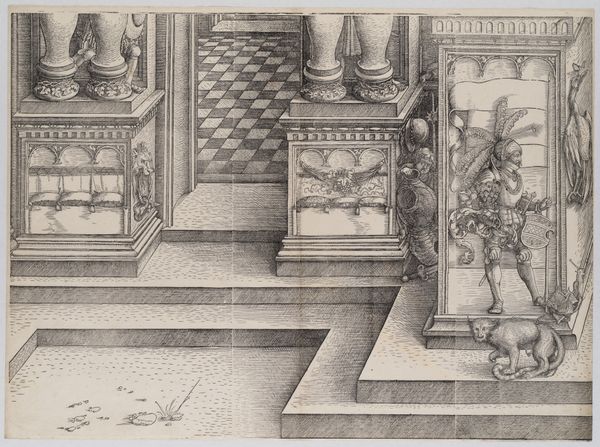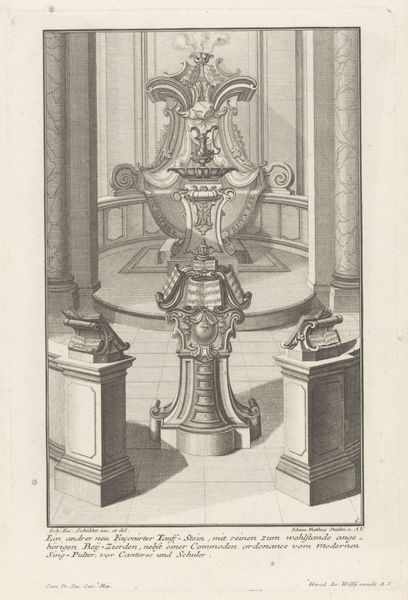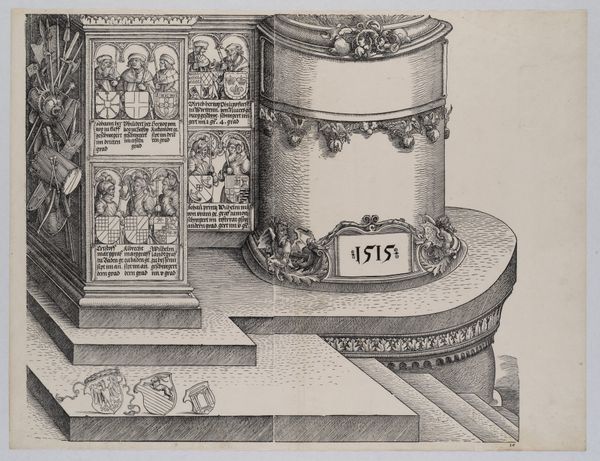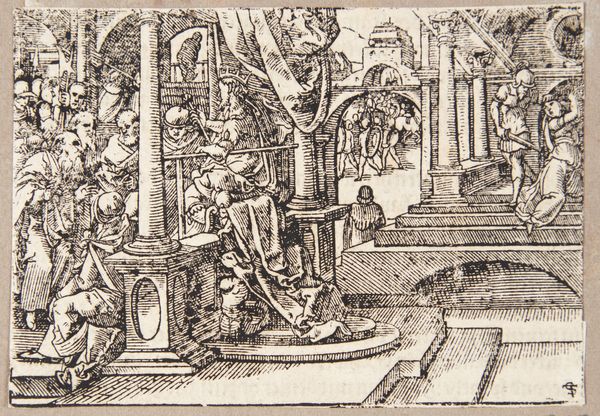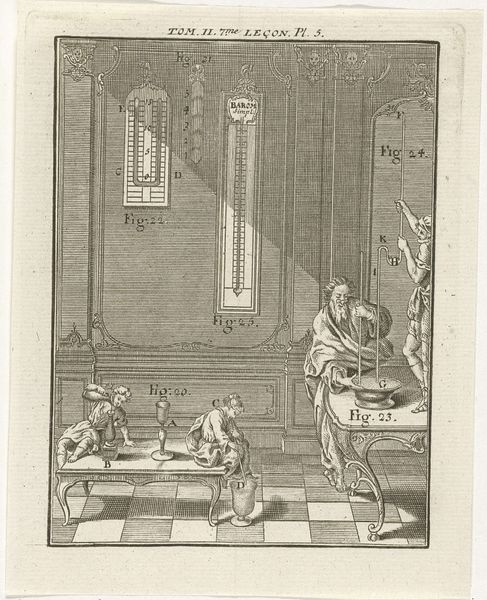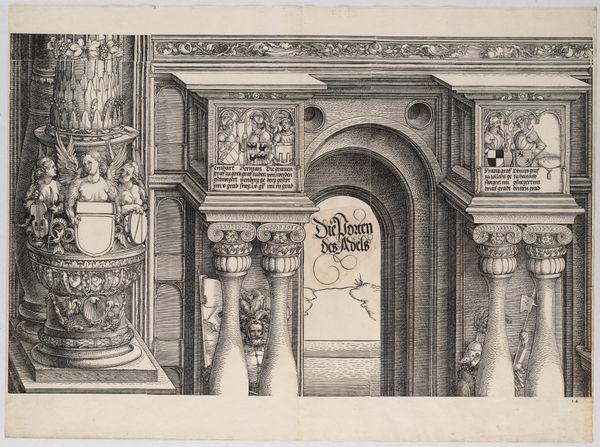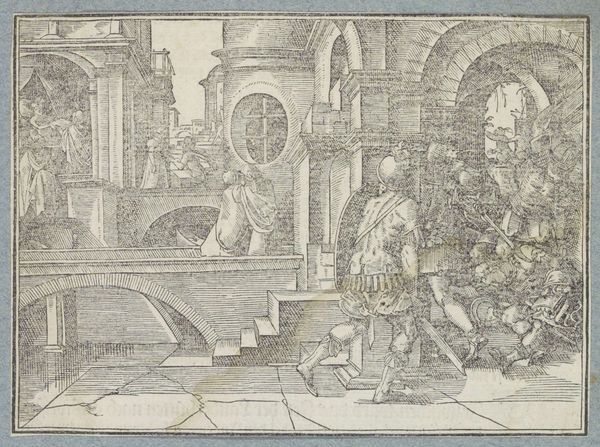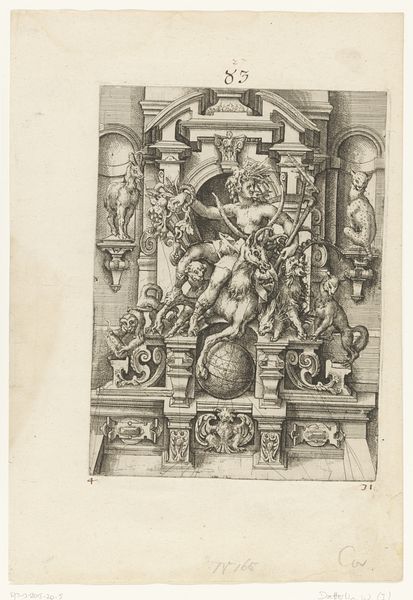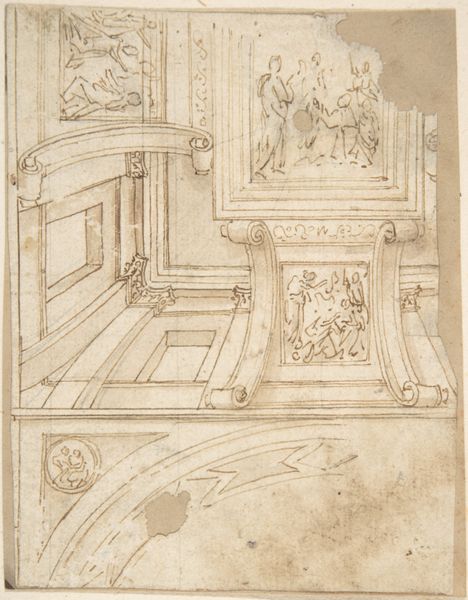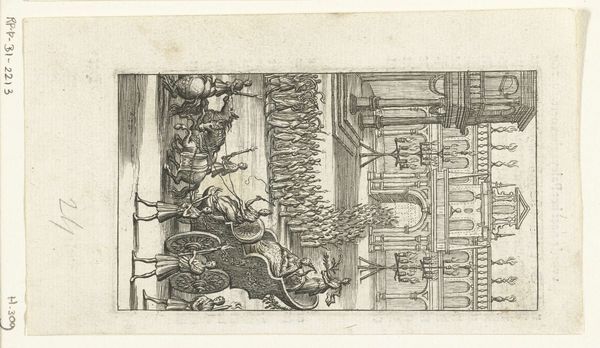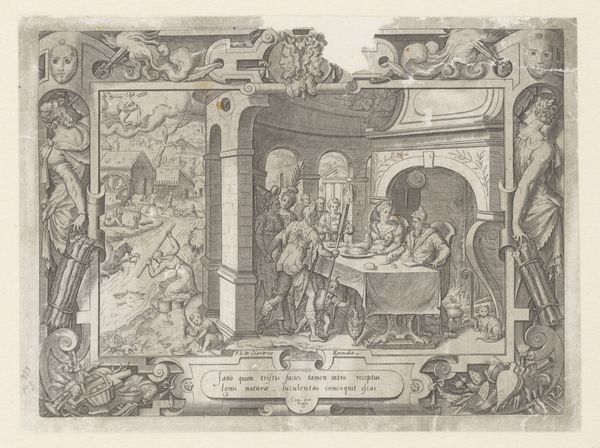
Lower Portion of the Entryway to the Right Portal (Die Porten des Adels); and the Outer Right Sockel of the Central Portal, from the Arch of Honor, proof, dated 1515, printed 1517-18 1515
0:00
0:00
drawing, print, engraving
#
drawing
# print
#
perspective
#
figuration
#
line
#
history-painting
#
italian-renaissance
#
engraving
Dimensions: Sheet: 18 7/16 in. × 25 in. (46.8 × 63.5 cm)
Copyright: Public Domain
Editor: This is "Lower Portion of the Entryway to the Right Portal," a 1515 engraving by Albrecht Dürer. It's incredibly detailed, almost photographic in its precision, especially the checkerboard floor receding into the distance. But what really strikes me is its somewhat propagandistic feel. What do you make of this, in terms of its cultural context? Curator: You've picked up on a crucial aspect. This wasn’t just art for art’s sake. Dürer created this as part of a larger commission by Emperor Maximilian I: "The Arch of Honor," a massive print intended to glorify the emperor and the Habsburg dynasty. It's vital to remember that printmaking in the Renaissance was a powerful tool for disseminating political messages. Editor: So, this section – the entryway – it's meant to contribute to that glorification? How? Curator: Look closely. The figures flanking the portal are idealized representations of power and nobility. And consider the perspective: the receding floor, the grand scale, all create an impression of immensity and authority. The arch itself, when assembled, would have dwarfed the viewer, visually reinforcing the Emperor's power. Also note the date. 1515! What was happening then, politically and religiously? Editor: Right, the Reformation was brewing. So, could this be seen as a form of visual pushback, an attempt to reinforce traditional hierarchies in the face of societal upheaval? Curator: Precisely. Dürer, though later sympathetic to some Reformation ideals, was here employed to reinforce the existing power structures. He was navigating a complex and shifting landscape of religion, politics, and patronage. The imagery here isn’t neutral, it actively participates in constructing and upholding a specific vision of the world, even going so far as to show wealth through detailed artistry and precious material goods like armor and intricate costumes. Editor: That’s fascinating. I hadn’t considered it as such an overt political statement, but that completely shifts my understanding of it. It makes me consider the ways art has always had something to say about politics. Curator: Absolutely. And Dürer's technical skill made this "statement" all the more powerful. Seeing the Renaissance through a modern lens lets us engage critically.
Comments
No comments
Be the first to comment and join the conversation on the ultimate creative platform.
